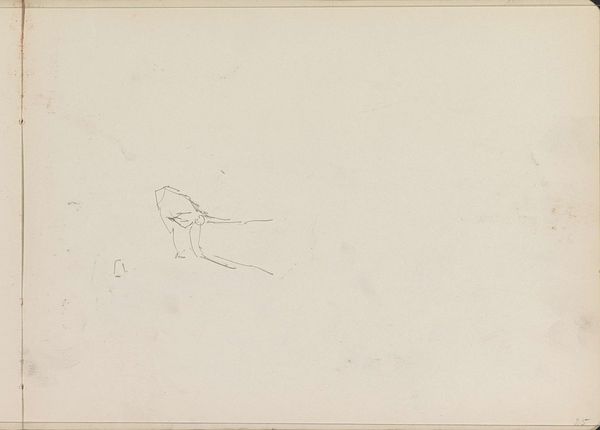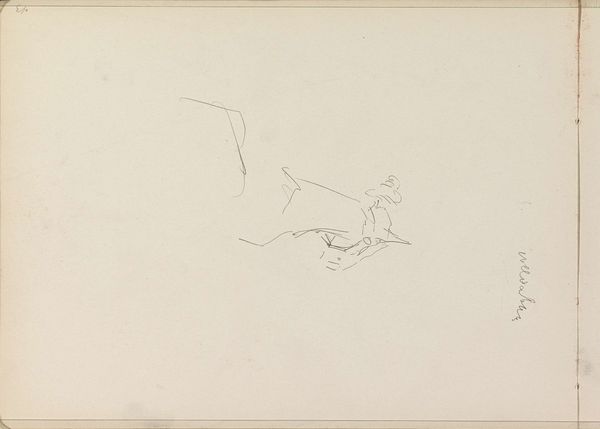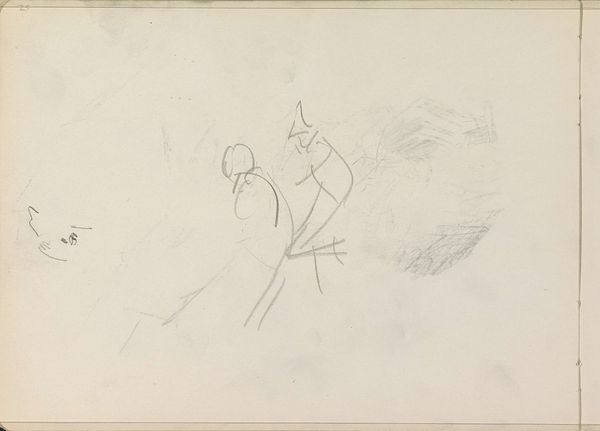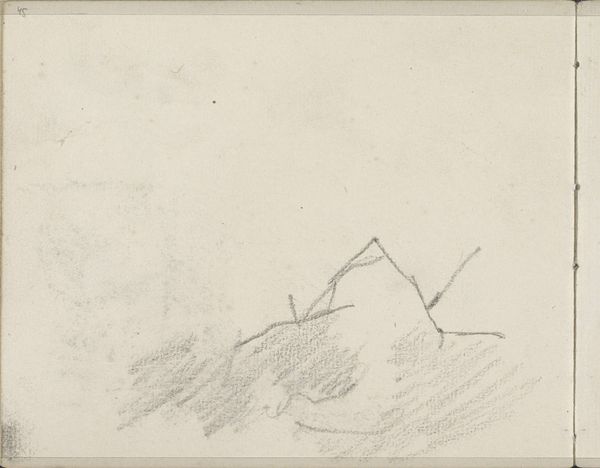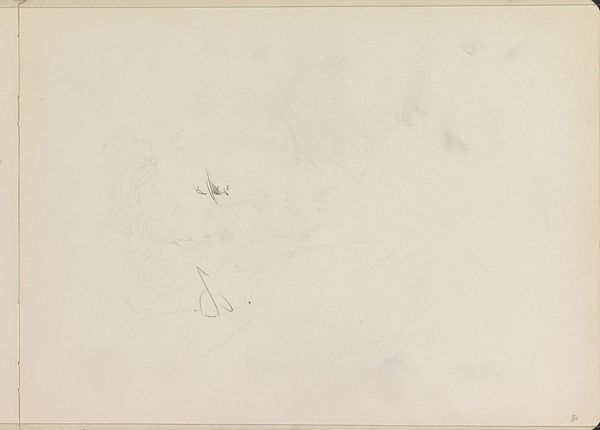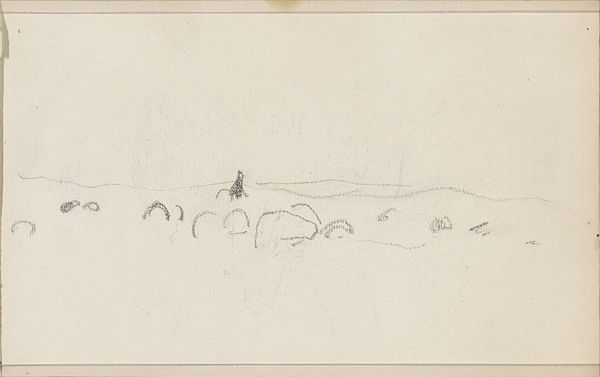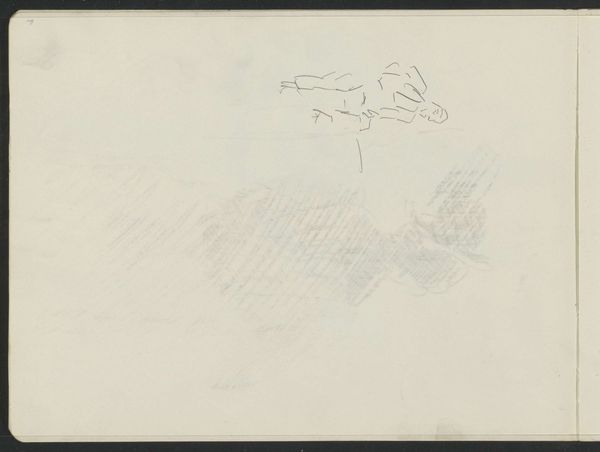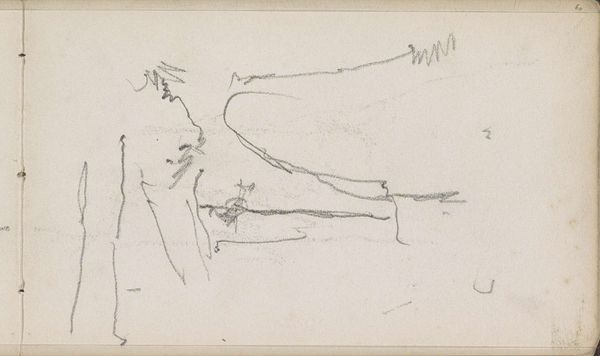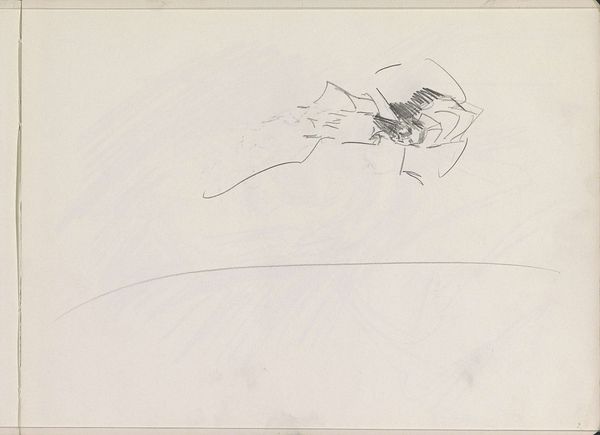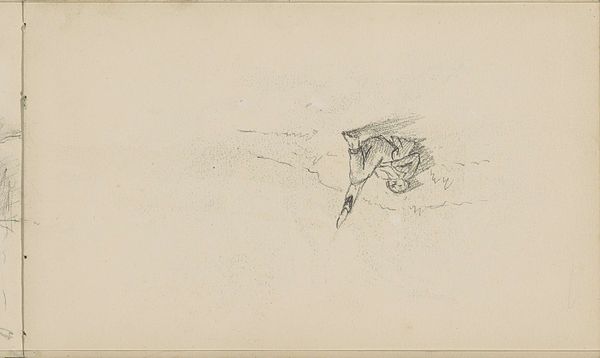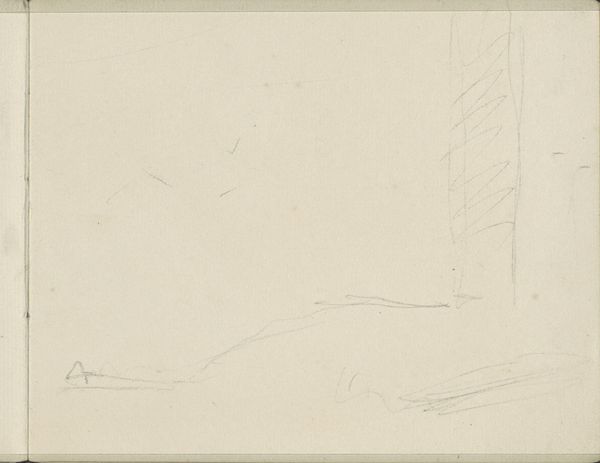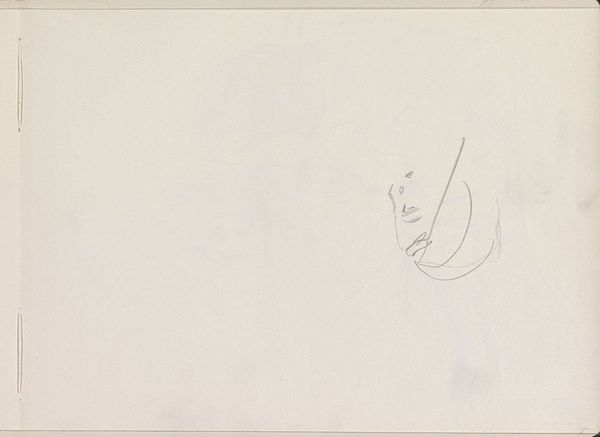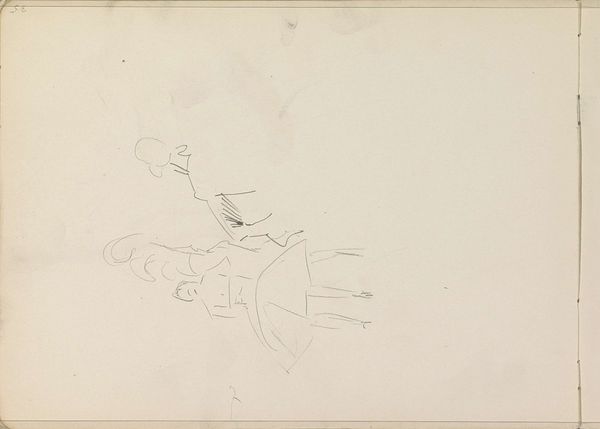
drawing, paper, pencil
#
drawing
#
impressionism
#
pencil sketch
#
landscape
#
paper
#
pencil
#
line
#
realism
Copyright: Rijks Museum: Open Domain
Editor: So, this is "Studie," a pencil drawing on paper by Anton Mauve, created around 1886-1888. It's currently at the Rijksmuseum. What strikes me is how minimal it is; it almost feels like a fleeting thought captured on paper. What do you see in this piece? Curator: I see more than just a fleeting thought; I see a representation of the marginalization of rural existence. Consider the context: late 19th-century Holland, undergoing industrialization. Mauve, and artists like him, were picturing an agrarian way of life that was gradually fading. The sketch, with its bare tree against an empty landscape, is for me is a sign of the precarity and vulnerability of a life bound to nature. How do you read the almost complete absence of detail? Editor: I hadn't considered the industrial context so directly. I just saw it as…sparse. The lack of detail now makes me think of the economic austerity of rural life. Is it too much to suggest that Mauve subtly critiques urban excess through this starkness? Curator: That's an interesting observation! By stripping away the excess, Mauve subtly invites us to question the values of a society increasingly focused on materialism and the accumulation of wealth at the expense of our shared connection to our natural environment. Who does the advance of urban life really benefit and what kind of work is valued? And isn't it worth exploring how his identity, his class, and even his gender impacted the kind of vision of rural existence he wanted to present? Editor: It's amazing how much a simple sketch can convey when you look at the historical and cultural factors surrounding its creation. I initially viewed it just in formalist terms, as an exercise in minimalist composition. Curator: Exactly! By situating "Studie" within its historical and socio-economic context, we begin to understand its power as a commentary on the changing world, as well as its relationship to identity and power structures within society. This is a great reminder that artistic statements are rarely created in a vacuum.
Comments
No comments
Be the first to comment and join the conversation on the ultimate creative platform.
